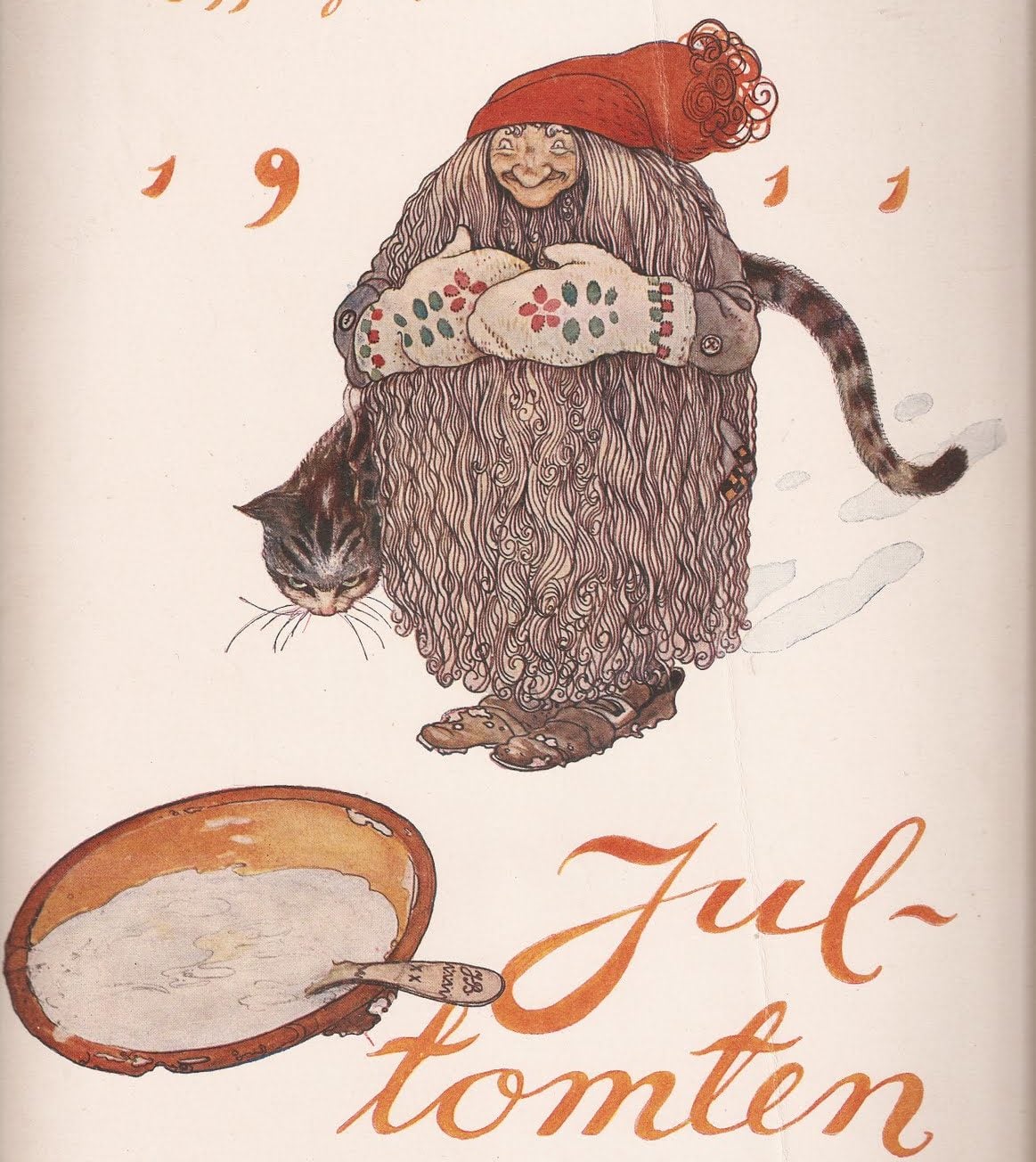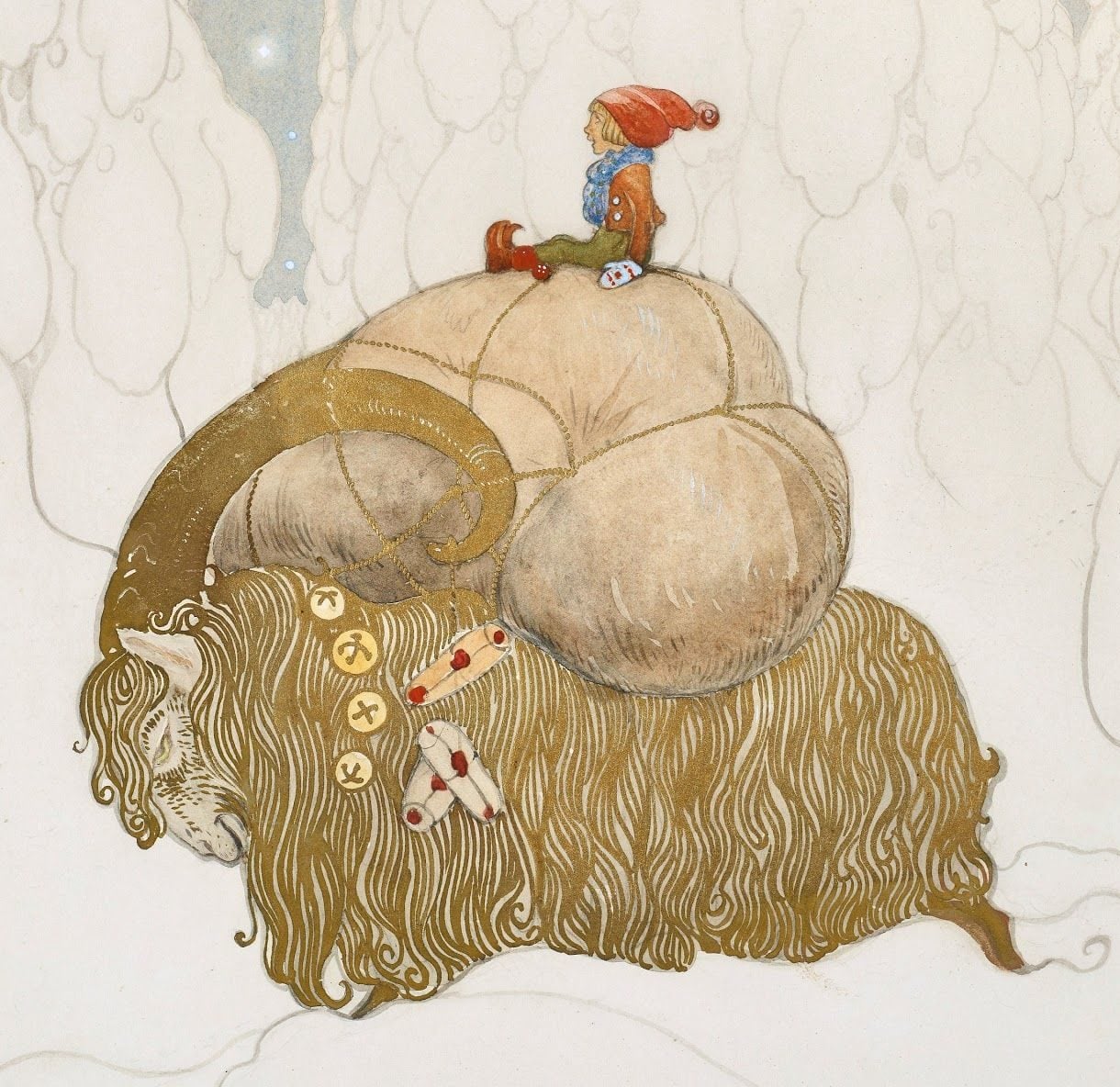 If you’ve been around Scandinavian culture, you’ve probably seen the ornaments of nisse during the holiday season. The distinct red cap, woolen clothes, and goofy figures are hard to miss. Not to be mistaken for Santa or his elves, these little scampering creatures are something else entirely.
If you’ve been around Scandinavian culture, you’ve probably seen the ornaments of nisse during the holiday season. The distinct red cap, woolen clothes, and goofy figures are hard to miss. Not to be mistaken for Santa or his elves, these little scampering creatures are something else entirely.
The mythology of the nisse starts as a guardian of the home, spirits that lived on the homestead alongside the farmer and his family. Thought to be loyal to the family specifically, they would come along should that family choose to relocate. Their function in the household was to protect the farm and livestock from misfortune. If the nisse was treated particularly well, they would help with the farm work and chores.
 The nisse were regarded to have an affection for the farm animals. This idea can still be seen today where some Scandinavian traditions depict the nisse arriving on the back of the Yule Goat, bringing presents. Nisse could have a favourite horse, and that horse would look a little better cared for and sometimes have its mane and tail braided. But if one undid the braids made by the nisse, one risked offending it.
The nisse were regarded to have an affection for the farm animals. This idea can still be seen today where some Scandinavian traditions depict the nisse arriving on the back of the Yule Goat, bringing presents. Nisse could have a favourite horse, and that horse would look a little better cared for and sometimes have its mane and tail braided. But if one undid the braids made by the nisse, one risked offending it.
Which brings me to another aspect of the nisse—they were touchy little creatures. They’re known for being mischievous, but they can be outright wrathful. A lot of effort would go towards assuring no one angered the nisse. Resistant to change, altering how a farm was run could invite the ire of the nisse. They also had a distaste for lazy farmers and those that abused their livestock. Their vengeance ranged from small pranks—such as tying the tails of cows together or turning objects around the house upside down—to biting people, beating up household members or livestock, ruining the farms’ fortune, or killing residents.
To appease the nisse, a bowl of porridge would be set out for it on Christmas night, prepared with a pat of butter on top. To not offer the nisse this gift, even if you had done nothing else to upset it, could risk it leaving the farm, removing its protection. Because nisse were assumed to live in places like under the floorboards, it was generally considered polite to shout a warning to the nisse if you dropped something in the house. Presumably so the nisse could get out of the way to prevent anything from spilling onto its head.
The imagination of a nisse’s appearance has changed very little over time, and the few variations are minor between Nordic countries. Size varies from a few inches tall to half the height of an adult man, and they either had long white beards or where completely beardless. They would usually be wearing traditional farmer garb: woolen tunic, belted at the waist, with knee-length breeches and knee-high stockings. The caps were red, made of wool, and conical in shape; the clothes were shades of red and grey. Nisse were thought to have super strength, and their bite was poisonous—only curable via otherworldly healing practices.
A story about the nisse displays the full spectrum of this creature’s mercurial nature, telling of a farmer who put out the customary porridge offering. However, the farmer put the butter at the bottom of the bowl instead of on top. The nisse was deeply offended by the appeared absence of the butter and slew one of the farmer’s cows. Later, hungry from its violent outburst against the cow, the nisse returned to eat the porridge, discovering the butter at the bottom of the bowl. Realizing its mistake and filled with remorse, the nisse roamed the land in search of an identical cow, and when he had found one, replaced the dead cow with the lookalike. Another story tells of a farm maid who helped herself to the nisse’s porridge. The angered nisse attacked the girl and the farmer found her in the morning, nearly dead.
Despite the cute appearances in their annual holiday depictions, like most mythology, there is always a more sinister side behind them. The perceived benefits provided by having a nisse in one’s home doesn’t seem worth the potential risks. At the very least, if you are inclined to decorate your house with nisse at Christmas time, make sure you aren’t out of butter.









